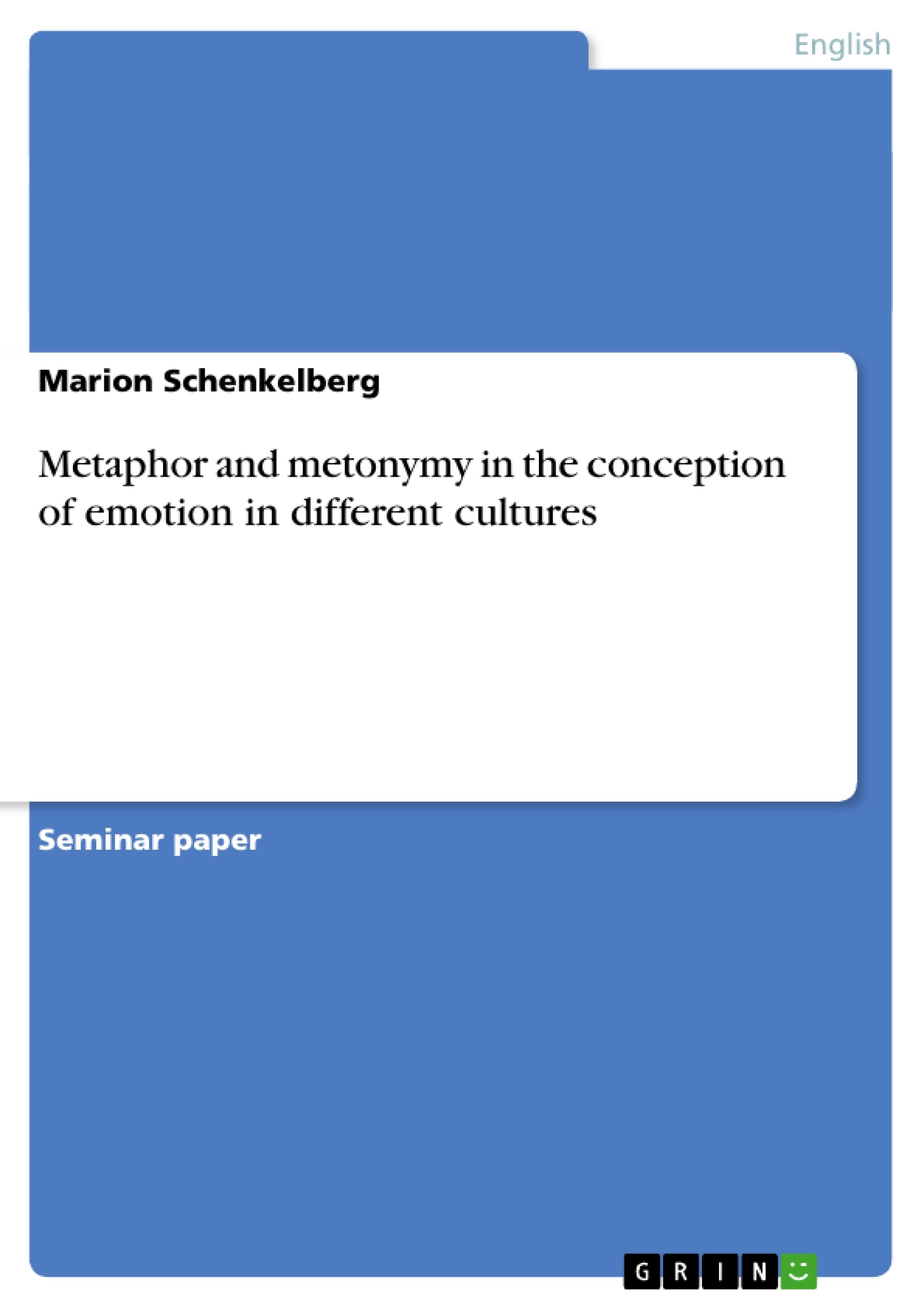Every time we talk about our emotions, we use images, especially metaphors and metonymies. The phenomena of these two kinds of image seem to have always been essential for the human conceptualization of emotions, as Gábor Györi claims: “[…] emotions have always invited the human mind to metaphorise about them” (1998: 117). Thus, the quality of timelessness stresses the importance of this way of reference to emotions. It would be useful to find out if they are also universal regarding culture. If emotions were conceptualized in the same images in cultures that completely differ from each other, there would be an evidence for the universality of metaphors and metonymies in the conceptualization of human emotions. The question of culture-specification includes, additionally to the question if the images in which basic emotions are referred to are universal, also the question whether something like basic emotions exists in general, and is discussed intensively. Except of the meaning of metaphor and metonymy in general and in reference to human emotions, the question of culture-specification will be discussed in this paper. We will have a look at the opponents and supporters of the theory of universality of emotions and emotion images and find out whether they really exclude each other or if one can find a hypothesis that considers both points of view.
Inhaltsverzeichnis (Table of Contents)
- Introduction
- Metaphor and metonymy in emotions
- Metaphor and its meaning in emotions
- Metonymy and its meaning in emotions
- Culture-specification of emotion concepts
- Culture-limitation of emotion concepts
- Universality of emotion concepts
- Conclusion
Zielsetzung und Themenschwerpunkte (Objectives and Key Themes)
This paper explores the role of metaphors and metonymies in the conceptualization of emotions, particularly focusing on whether their use is universal across different cultures. It aims to analyze the relationship between these images and human emotions, and investigate the extent to which they are culturally specific.
- Metaphor and metonymy in emotions
- Culture-specification of emotion concepts
- Universality of emotion concepts
- The role of metaphors and metonymies in shaping emotion categories
- The relationship between these images and human physiology
Zusammenfassung der Kapitel (Chapter Summaries)
- Introduction: This chapter sets the stage by introducing the central research question of whether metaphors and metonymies used in the conceptualization of emotions are universal across cultures. It emphasizes the importance of these images for human understanding of emotions and explores the implications of cultural specificity.
- Metaphor and metonymy in emotions: This chapter delves into the nature of metaphors and metonymies in the context of human emotions. It highlights the unconscious nature of their use and their role in structuring our understanding of emotion categories. The chapter also introduces the concept of conceptual metaphors and explores the link between these images and human physiology.
- Metaphor and its meaning in emotions: This chapter focuses specifically on the concept of metaphor, explaining its definition and how it operates in the context of emotions. It explores the notion of conceptual metaphors, highlighting how they become integrated into language through regular use. The chapter also discusses the source and target domain model, illustrating how metaphors transfer meaning from concrete to abstract concepts.
Schlüsselwörter (Keywords)
The key focus areas of this text are metaphors, metonymies, emotions, culture, universality, conceptualization, conceptual metaphors, source and target domain, and human physiology. The paper delves into the role of these images in shaping our understanding of emotions and explores the extent to which they are culturally specific or universal.
- Citation du texte
- Marion Schenkelberg (Auteur), 2004, Metaphor and metonymy in the conception of emotion in different cultures, Munich, GRIN Verlag, https://www.grin.com/document/26754



